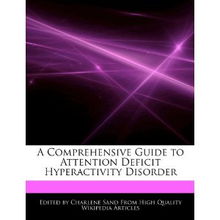Content:
Introduction: As the leaves begin to change and the air turns crisp, anglers often find themselves contemplating the prospect of fishing during the fall and winter seasons. While many anglers prefer the warmer months, the fall and winter can offer some of the most rewarding fishing experiences. In this article, we will delve into the essential techniques and tips for mastering the art of fall and winter fishing.
Understanding the Fish Behavior: During the fall and winter months, fish behavior can be quite different from what you might experience during the summer. It is crucial to understand these changes in order to be successful. Here are some key points to consider:
a. Water Temperature: Fish are cold-blooded creatures, and as the water temperature drops, their metabolism slows down. This means they become less active and may move to deeper waters to conserve energy. It is essential to target these deeper areas during the colder months.
b. Food Sources: With the onset of fall and winter, fish may become more selective in their feeding habits. They tend to focus on high-energy food sources, such as crayfish, minnows, and smaller fish. Understanding the primary food sources in your fishing area can help you choose the right bait or lure.
Choosing the Right Gear: To effectively fish during the fall and winter, it is crucial to have the right gear. Here are some recommendations:
a. Rod and Reel: A medium-heavy to heavy-duty rod and reel combination is ideal for fall and winter fishing. These setups provide the necessary strength to handle larger fish and the sensitivity to detect subtle bites.
b. Line: Use a line that is appropriate for the fish you are targeting. For example, if you are fishing for trout, a 4-6 pound test line would be suitable. Heavier lines may spook fish, while lighter lines may not provide enough strength to land larger fish.
c. Lures and Baits: During the colder months, fish may be less aggressive, so it is essential to use smaller and slower-moving lures or baits. Jigs, spinners, and small crankbaits can be effective choices. Live bait, such as minnows or crayfish, can also be productive.
Timing and Location: Timing and location play a crucial role in fall and winter fishing success. Here are some tips:

a. Timing: Fish are often most active during the first few hours of daylight and the last few hours of daylight. These periods are known as the "magic hours" and are the best times to fish during the fall and winter.
b. Location: During the colder months, fish tend to congregate in deeper waters. Look for areas such as deep holes, drop-offs, or submerged structures where fish can find shelter and warmth. Additionally, areas with a steady water flow, such as rivers or streams, can be productive during the fall and winter.
Weather Considerations: The weather can significantly impact fall and winter fishing. Here are some tips to consider:
a. Wind: Wind can make fishing challenging, especially if it is strong. Try to fish on calm or overcast days when the wind is lighter.
b. Temperature: Dress appropriately for the weather. Wear layers to stay warm and consider using a heated vest or blanket to retain body heat.
Patience and Persistence: Fall and winter fishing can sometimes be slower-paced compared to other seasons. It is essential to be patient and persistent. Take your time to explore different locations and techniques until you find what works best for the fish you are targeting.
Conclusion: Fall and winter fishing can be a challenging but highly rewarding experience for anglers. By understanding fish behavior, choosing the right gear, selecting the right timing and location, and dressing appropriately for the weather, you can increase your chances of success. Remember to be patient and persistent, and you will undoubtedly enjoy the beauty and tranquility of fishing during the fall and winter months.












